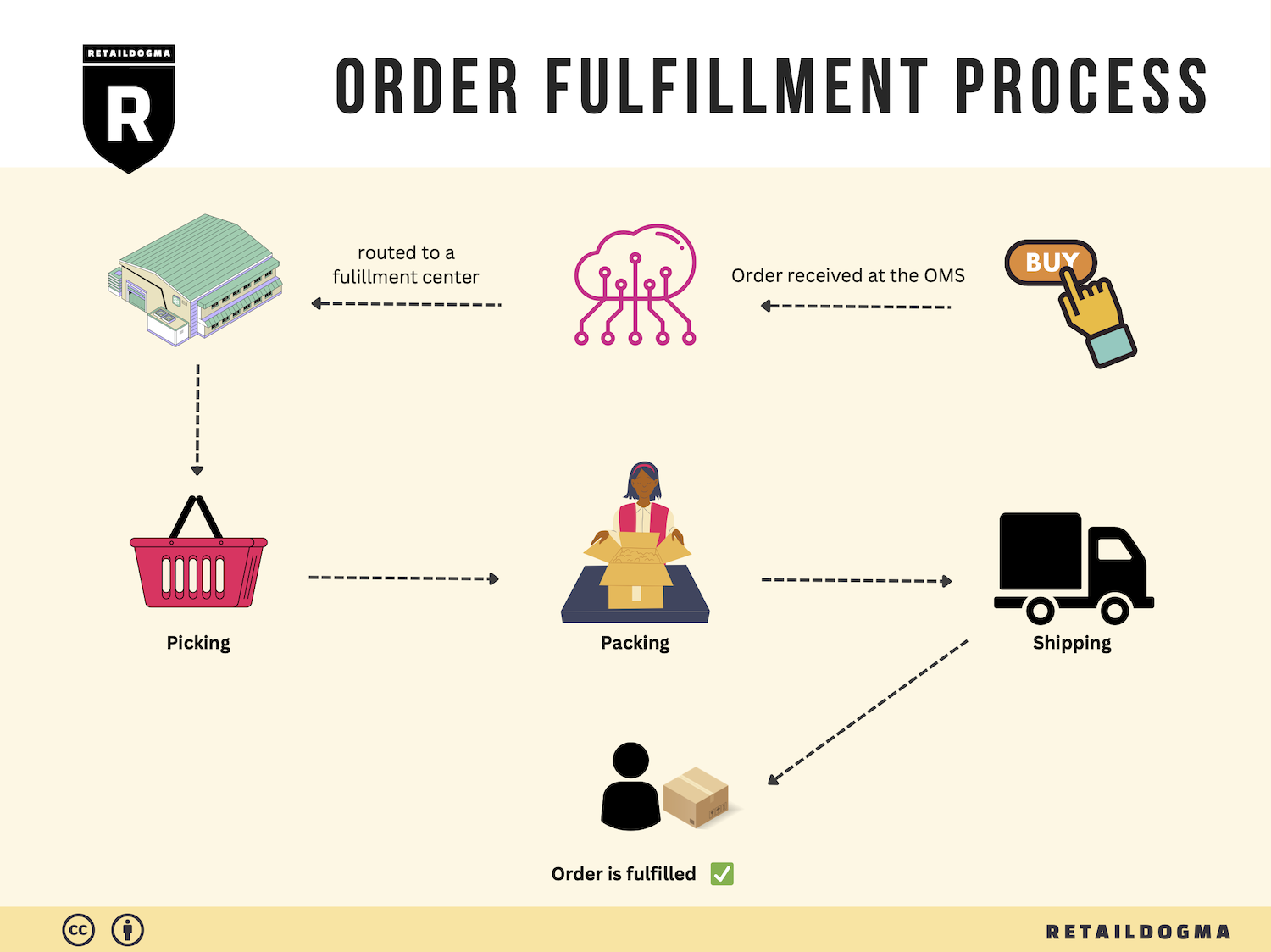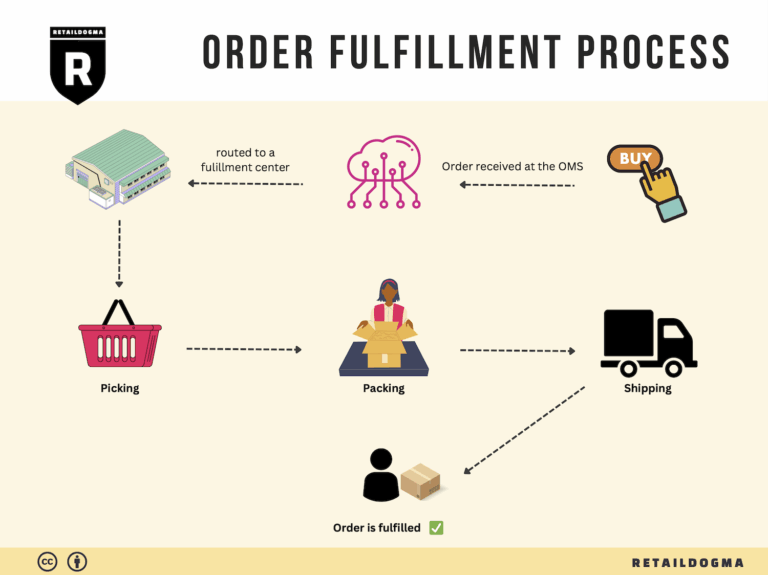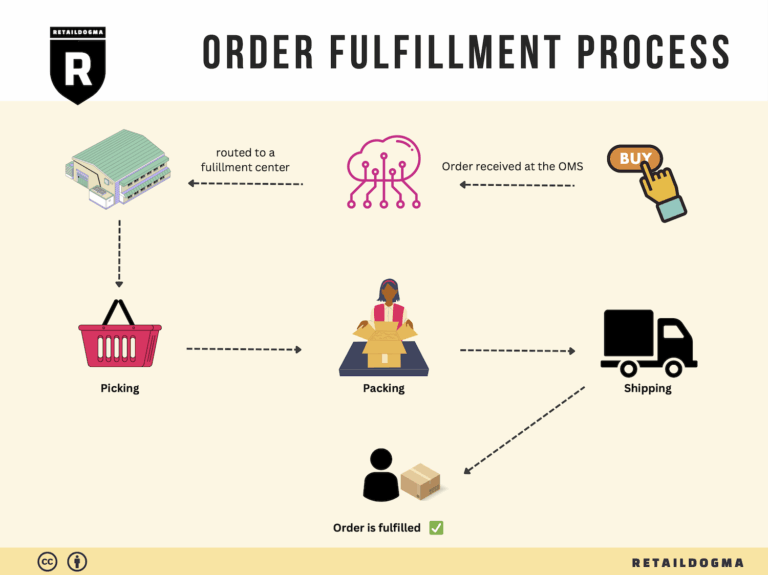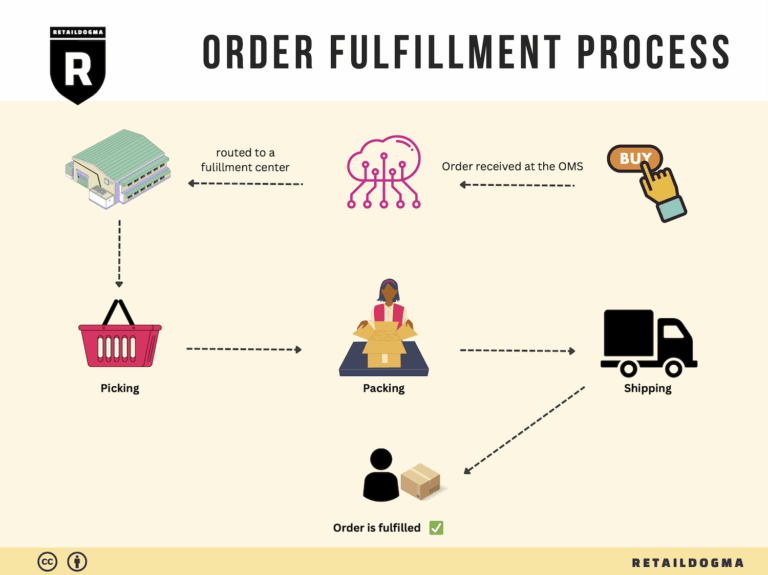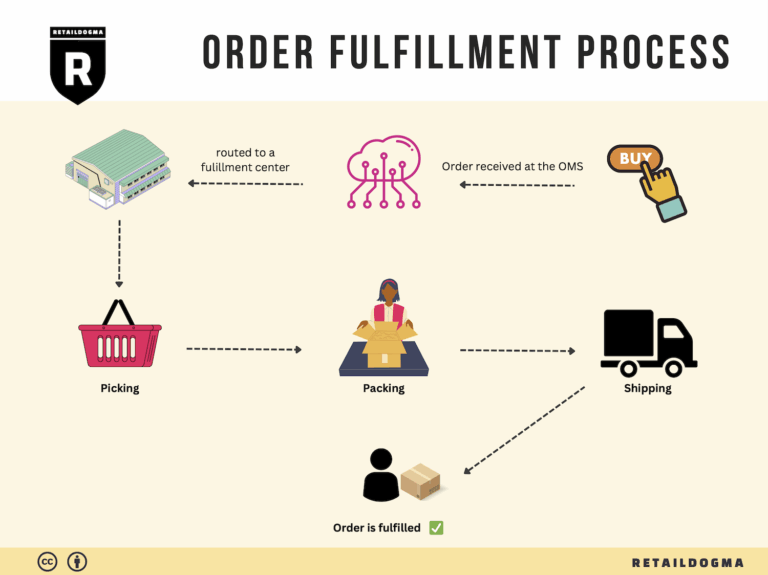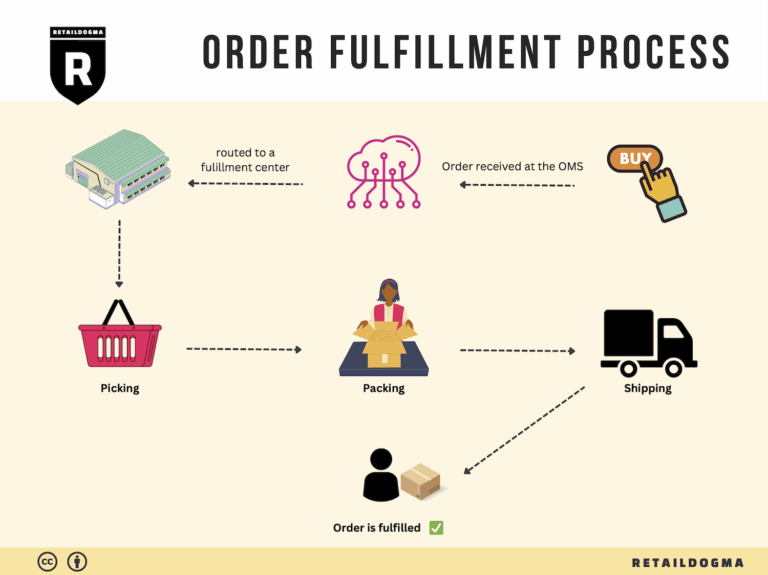How Order Fulfillment Works: A Step-by-Step Guide for Businesses
What is E-commerce Fulfillment? An Introduction for Growing Businesses
Understanding the Challenges of E-commerce Fulfillment
As an e-commerce business owner, you may find yourself overwhelmed by the complexities of packing and shipping orders. Managing inventory, ensuring timely deliveries, and handling customer inquiries can quickly become a daunting task. These challenges often distract you from your core mission: growing your business and delighting your customers.
E-commerce fulfillment is the backbone of your operations, encompassing the entire process of getting a product from your warehouse to your customer’s doorstep. It includes everything from receiving inventory and storing products to picking, packing, shipping, and handling returns. Efficient fulfillment is critical, as it directly impacts customer satisfaction, operational costs, and ultimately, your bottom line.
What This Guide Will Cover
In this guide, we will explore various fulfillment models to help you choose the best approach for your growing business. We will delve into:
-
Fulfillment Models: Understand the differences between in-house fulfillment, third-party logistics (3PL), and Fulfillment by Amazon (FBA). Each model has its advantages and drawbacks, and knowing them will help you make informed decisions.
-
Core Services: Learn about the essential services that fulfillment partners offer, including inventory management, order processing, shipping logistics, and returns handling. These services can significantly streamline your operations and improve efficiency.
-
Choosing a Partner: Selecting the right fulfillment partner is crucial. We will provide insights into what to look for in a logistics provider, such as reliability, technology integration, scalability, and customer support.
-
Pricing: We will break down the costs associated with different fulfillment options, helping you understand how to budget effectively and avoid hidden fees. Understanding pricing models will empower you to choose a solution that aligns with your financial goals.
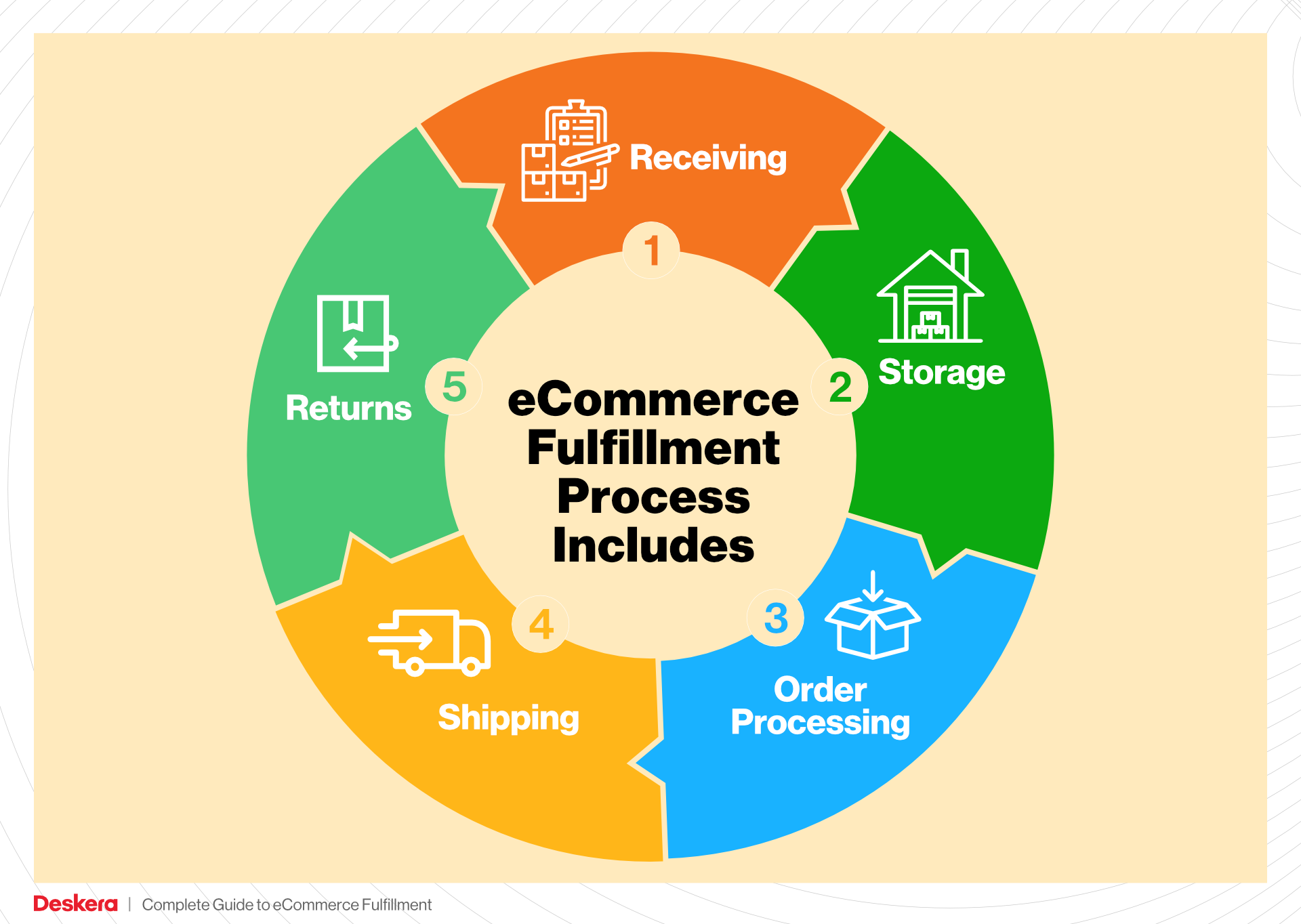
Empowering Your Business Decisions
The ultimate goal of this guide is to empower you to make smart, strategic decisions about your logistics. By demystifying the fulfillment process and providing practical insights, we aim to equip you with the knowledge necessary to enhance your operational efficiency and scale your business effectively. With the right fulfillment strategy in place, you can focus on what truly matters: growing your brand and providing exceptional experiences for your customers.
What You’ll Learn In This Guide
- What is E-commerce Fulfillment? An Introduction for Growing Businesses
- The Order Fulfillment Process: From ‘Buy’ Button to Customer’s Door
- Comparing Fulfillment Models: In-House vs. 3PL vs. Dropshipping
- A Deep Dive into Amazon FBA: Pros, Cons, and Who It’s For
- Core Services Offered by Fulfillment Centers
- How to Choose a Fulfillment Partner: A 6-Point Checklist
- Understanding Fulfillment Pricing: A Breakdown of Common Fees
- Frequently Asked Questions (FAQs) about Fulfillment
- Conclusion: Is Outsourcing Fulfillment the Right Move for Your Business?
- Important Disclaimer
The Order Fulfillment Process: From ‘Buy’ Button to Customer’s Door
1. Receiving Inventory
The first step in the order fulfillment process is receiving inventory. This involves the systematic intake of products from suppliers into the fulfillment center. When products arrive, they undergo a thorough inspection to ensure that the quantity and quality match the purchase order. This step is crucial because discrepancies can lead to stockouts or overstock situations, both of which can negatively impact customer satisfaction.
During this process, each product is assigned a Stock Keeping Unit (SKU), a unique identifier that helps in tracking inventory levels. Accurate SKU assignment is essential as it simplifies inventory management, allowing businesses to easily locate products during the picking phase. Properly managing the receiving process can significantly reduce the chances of errors and enhance overall operational efficiency.
2. Warehouse Storage
Once the inventory is received and verified, the next step is warehouse storage. This involves strategically placing products in designated areas within the fulfillment center. Efficient storage solutions are critical for maximizing space and ensuring quick access to products when orders come in.
The layout of the warehouse should be optimized based on product demand and size. For instance, fast-moving items may be stored closer to the packing area, while slower-moving items can be placed further away. Implementing a systematic storage method—such as FIFO (First In, First Out)—ensures that older stock is sold before newer stock, reducing the risk of obsolescence. Effective warehouse storage not only improves picking speed but also minimizes retrieval errors, which can lead to customer dissatisfaction.
3. Order Picking
Order picking is the process where items are retrieved from the warehouse to fulfill customer orders. This step is pivotal as it directly impacts delivery speed and accuracy. When a customer places an order, a pick list is generated, detailing the items and their locations in the warehouse.
There are several picking methods—such as single order picking, batch picking, and zone picking—each suited to different business models and order volumes. For instance, zone picking divides the warehouse into sections, with pickers assigned to specific zones, which can increase efficiency in large operations. The goal during this step is to minimize the time taken to gather items while ensuring that the correct products are picked. Mistakes in this stage can lead to incorrect shipments, resulting in returns and decreased customer trust.
4. Order Packing
After items are picked, they move to the packing stage, where they are prepared for shipment. Proper packing is essential for protecting products during transit and ensuring they arrive in good condition. During this step, items are organized, and packaging materials—such as boxes, bubble wrap, and tape—are selected based on the nature of the products being shipped.
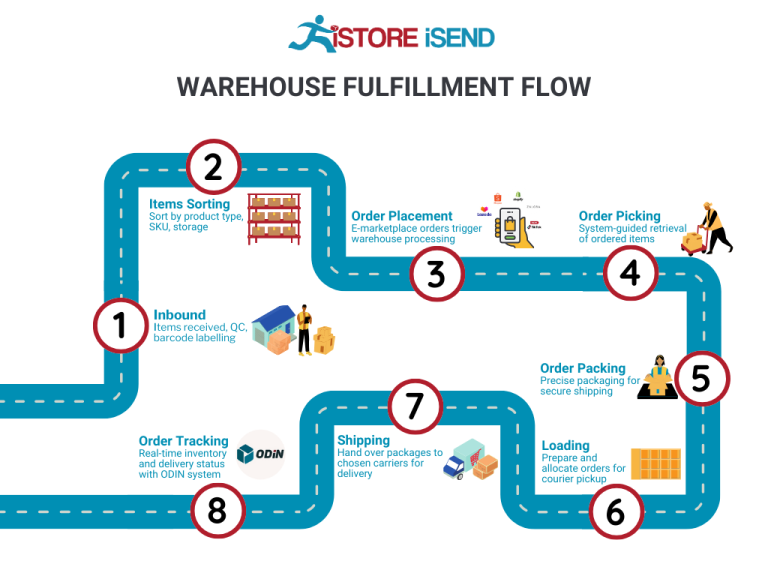
Efficient packing processes often incorporate technology, such as packing slips and automated packing systems, to enhance accuracy and speed. Additionally, businesses can implement quality checks to ensure that the right items are packed and that packaging is secure. A well-executed packing process not only safeguards products but also reinforces brand integrity through professional presentation, enhancing customer satisfaction.
5. Shipping & Delivery
The final step in the order fulfillment process is shipping and delivery. Once orders are packed, they are labeled and dispatched to the appropriate shipping carriers. This stage is critical as it determines how quickly customers receive their products, which is a key factor in customer satisfaction.
Shipping methods can vary, with options ranging from standard to expedited delivery. Businesses must choose the right carriers and shipping options based on cost, delivery speed, and reliability. Keeping customers informed about their shipment status through tracking information is also vital, as it builds trust and enhances the customer experience.
Efficient shipping processes can significantly reduce delivery times and costs, leading to improved customer retention and increased sales. By leveraging technology and data analytics, businesses can optimize their shipping strategies, ensuring that they meet customer expectations while maintaining profitability.
By understanding and implementing these five steps effectively, e-commerce businesses can streamline their order fulfillment process, ultimately leading to enhanced operational efficiency and improved customer satisfaction.
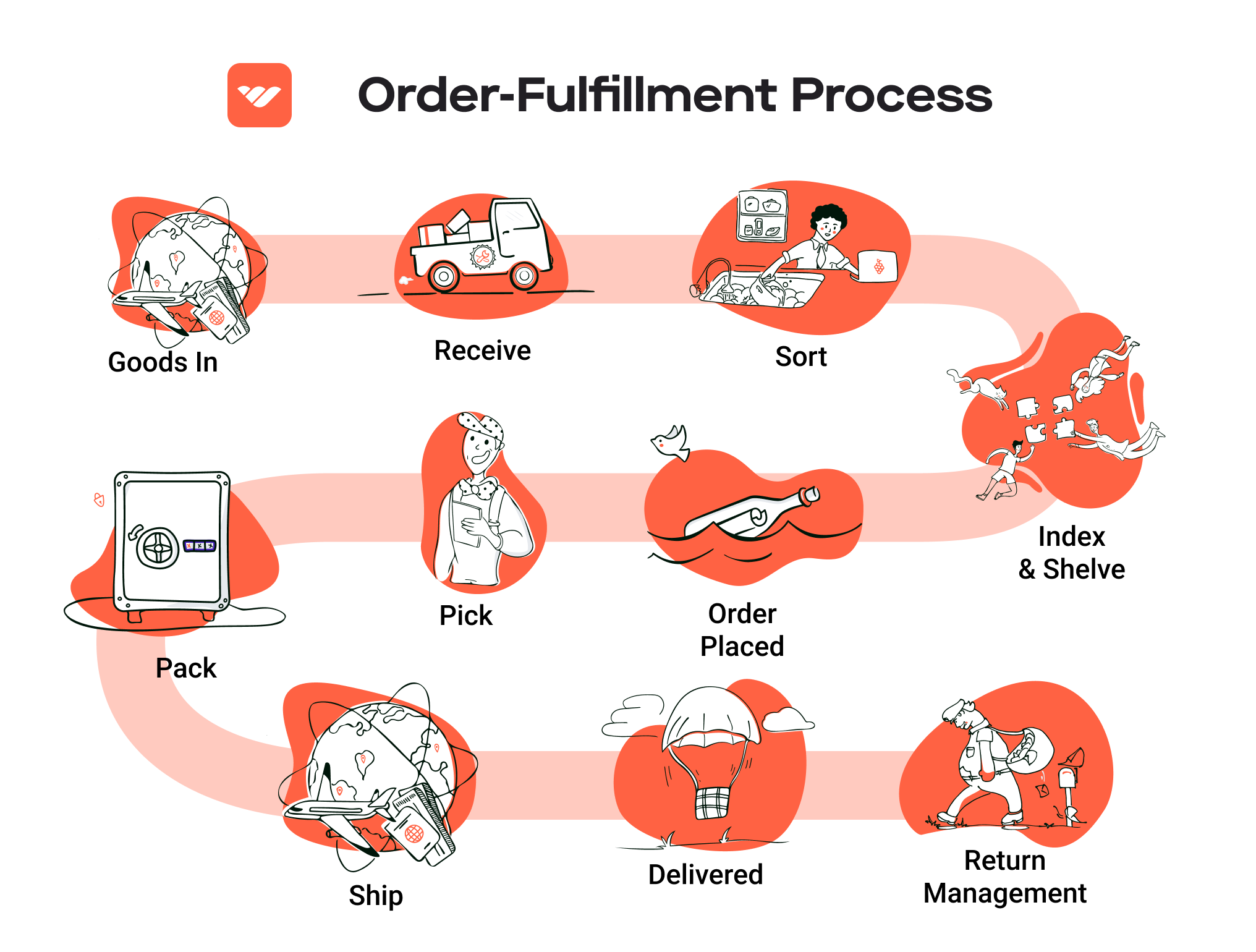
Comparing Fulfillment Models: In-House vs. 3PL vs. Dropshipping
Fulfillment Model Comparison Table
| Model | Who Handles Inventory | Best For (Business Stage) | Key Advantage | Key Disadvantage |
|---|---|---|---|---|
| In-House Fulfillment | Business owner/employee team | Startups/Established | Full control over operations | High overhead costs |
| Third-Party Logistics (3PL) | Third-party logistics provider | Scaling businesses | Reduced operational burden | Less control over inventory |
| Dropshipping | Supplier/manufacturer | New businesses | Low startup costs | Lower profit margins |
In-House Fulfillment
In-house fulfillment is a model where a business manages its inventory and order processing internally. This typically involves hiring staff, renting warehouse space, and purchasing equipment necessary for storage and shipping. Companies that choose this model often do so because it allows them to maintain full control over their operations, including quality assurance, customer service, and inventory management. This is particularly advantageous for businesses that have specific product handling requirements or that want to ensure a high level of customization in their fulfillment processes. However, the in-house model can come with significant overhead costs, including salaries, facilities, and equipment, making it less scalable and potentially risky for startups or small businesses with limited capital.
Third-Party Logistics (3PL)
Third-party logistics (3PL) refers to outsourcing logistics and fulfillment operations to an external service provider. This model is ideal for businesses looking to scale without the burden of managing warehousing and shipping themselves. By partnering with a 3PL, companies can benefit from established fulfillment networks, advanced technology, and expertise in logistics management. This allows businesses to focus on their core competencies, such as marketing and product development, while leveraging the 3PL’s resources to streamline order processing and improve delivery speeds. Despite these advantages, companies using 3PL may face challenges related to control over inventory and potential communication issues, which can affect customer satisfaction and order accuracy.
Dropshipping
Dropshipping is a fulfillment model where the retailer does not hold any inventory. Instead, when a customer places an order, the retailer purchases the item from a third-party supplier, who then ships it directly to the customer. This model is particularly appealing to new businesses or entrepreneurs with limited financial resources, as it eliminates the need for upfront inventory investment and reduces risk. The primary advantage of dropshipping is its low operational cost and minimal overhead, allowing business owners to focus on marketing and customer acquisition. However, dropshipping typically comes with lower profit margins due to reliance on suppliers, and challenges such as longer shipping times and potential quality control issues, which can lead to customer dissatisfaction if not managed effectively.
Conclusion
In summary, each fulfillment model—In-House, 3PL, and Dropshipping—offers distinct advantages and disadvantages that cater to different business needs and stages. Understanding these nuances can help e-commerce business owners and operations managers make informed decisions about which model aligns best with their growth objectives and operational capabilities. When choosing a fulfillment strategy, consider factors such as control, cost, scalability, and customer experience to find the right fit for your e-commerce business.
A Deep Dive into Amazon FBA: Pros, Cons, and Who It’s For
Understanding Fulfillment by Amazon (FBA)
Fulfillment by Amazon (FBA) is a service provided by Amazon that allows sellers to store their products in Amazon’s fulfillment centers. Amazon then takes care of storage, packaging, shipping, and customer service on behalf of the sellers. This service is particularly appealing to e-commerce businesses looking to scale their operations efficiently and leverage Amazon’s vast logistics network.
When a customer orders a product, Amazon picks, packs, and ships it directly to the customer. FBA also includes handling returns and customer inquiries, making it a comprehensive solution for online sellers. Additionally, products fulfilled by Amazon are eligible for Amazon Prime, which can significantly enhance visibility and sales potential.
How FBA Works
-
Set Up an Account: Sellers need to create an Amazon seller account and enroll in the FBA program.
-
Product Listing: Once enrolled, sellers create product listings on Amazon, specifying which products they want to fulfill through FBA.
-
Inventory Shipment: Sellers then ship their inventory to Amazon’s fulfillment centers. This can be done in bulk or in smaller quantities, depending on demand and storage space.
-
Storage and Fulfillment: Amazon stores the products in their warehouses. When a customer places an order, Amazon handles the picking, packing, and shipping of the product.
-
Customer Service and Returns: Amazon also manages customer service and returns, allowing sellers to focus on other aspects of their business.
-
Payment and Fees: Sellers are paid for their sales, minus the FBA fees, which cover storage and fulfillment services.
Pros of FBA
-
Prime Eligibility: One of the most significant advantages of using FBA is that products become eligible for Amazon Prime. This not only increases the visibility of the products but also attracts a loyal customer base that prefers fast, free shipping.
-
Customer Trust: Amazon is a well-established brand known for its customer service. By using FBA, sellers benefit from this trust, which can lead to higher conversion rates and customer loyalty.
-
Multi-Channel Fulfillment: FBA is not limited to Amazon sales. Sellers can use Amazon’s fulfillment services to ship products sold on other platforms, such as eBay or their own websites, making it a versatile option for scaling operations.
-
Simplified Logistics: FBA simplifies the logistics of order fulfillment. Sellers can delegate the complex processes of storage, packing, and shipping to Amazon, allowing them to focus on marketing and growing their business.
-
Scalability: As businesses grow, FBA provides a scalable solution. Sellers can send more inventory to Amazon as their sales increase without the need to invest in additional warehousing or staffing.
Cons of FBA
-
High Fees: While FBA offers many benefits, it comes with high fees that can eat into profit margins. These include storage fees for keeping products in Amazon’s warehouses and fulfillment fees for each order processed.
-
Strict Inventory Rules: Amazon has strict inventory management policies. Sellers must adhere to these rules, which can be challenging for those with fluctuating inventory levels or seasonal products.
-
Commingling Risks: FBA products may be commingled with inventory from other sellers. This can lead to complications if a customer returns a product that was not originally sold by the seller, potentially affecting brand integrity and customer satisfaction.
-
Loss of Control: By using FBA, sellers relinquish some control over the fulfillment process. This can be particularly concerning for brands that prioritize unique packaging or personalized customer experiences.
-
Limited Branding Opportunities: While FBA does offer white-label shipping, the branding opportunities are limited compared to handling fulfillment in-house. This can affect brand recognition and customer loyalty.
Who is FBA Best For?
Fulfillment by Amazon is particularly well-suited for:
-
Small to Medium-Sized Businesses: Businesses that may not have the resources to manage their own warehousing and shipping operations can benefit significantly from FBA.
-
Brands Looking to Scale: Companies aiming to grow their sales quickly can leverage FBA’s efficient logistics and extensive reach to expand their market presence.
-
Sellers with High Sales Volumes: Businesses that consistently sell a high volume of products may find that the fees associated with FBA are offset by the increased sales and customer trust.
-
E-commerce Entrepreneurs: New sellers or those testing the waters in e-commerce can utilize FBA to simplify logistics and focus on product development and marketing.
-
Multi-Channel Sellers: Brands selling on various platforms can streamline their fulfillment process through FBA, allowing them to manage orders from multiple channels efficiently.
In conclusion, while Fulfillment by Amazon offers a robust solution for e-commerce businesses aiming to scale, it’s crucial to weigh the pros and cons carefully. Understanding the costs, risks, and operational implications will help sellers make informed decisions about whether FBA aligns with their business goals and strategies.
Core Services Offered by Fulfillment Centers
Inventory Management & Warehousing
Inventory management is the backbone of any successful e-commerce operation. Fulfillment centers offer sophisticated inventory management systems that track stock levels in real-time, helping businesses maintain optimal inventory without overstocking or stockouts. These systems often integrate seamlessly with e-commerce platforms, providing business owners with accurate data on product availability, sales trends, and forecasting.
The benefits of effective inventory management include:
-
Enhanced Visibility: By utilizing advanced technology, fulfillment centers provide e-commerce businesses with visibility into their inventory levels across multiple locations. This ensures that businesses can make informed decisions about restocking and inventory allocation.
-
Cost Efficiency: By reducing the costs associated with excess inventory and storage, businesses can allocate resources more efficiently. This can lead to improved cash flow and profitability.
-
Scalability: As e-commerce businesses grow, so do their inventory needs. Fulfillment centers can accommodate fluctuating inventory levels, allowing businesses to scale operations without the need for significant infrastructure investments.
Pick and Pack Services
Pick and pack services are essential for e-commerce businesses that require efficient order fulfillment. This service involves selecting items from the warehouse (picking) and then packaging them for shipment (packing). Fulfillment centers employ trained staff and advanced technology to ensure this process is conducted swiftly and accurately.
The advantages of pick and pack services include:
-
Speed and Efficiency: Fulfillment centers are designed for high-volume operations, allowing them to process orders quickly. This is crucial for maintaining customer satisfaction, especially in an era where fast shipping is expected.
-
Accuracy: With the use of barcode scanning and automated systems, fulfillment centers minimize the risk of picking errors. Accurate order fulfillment directly impacts customer loyalty and reduces the costs associated with returns.
-
Custom Packaging Options: Many fulfillment centers offer custom packaging solutions that enhance brand presentation. This can include branded boxes, packing slips, and promotional materials, which help create a memorable unboxing experience for customers.
Kitting and Assembly
Kitting and assembly services enable e-commerce businesses to offer bundled products or assembled items as part of their sales strategy. This service involves combining multiple products into a single package or assembling components into a finished product before shipping.
The benefits of kitting and assembly include:
-
Increased Sales Opportunities: By offering bundled products or assembled items, businesses can enhance their product offerings and increase average order values. Customers often appreciate the convenience of purchasing multiple related items together.
-
Streamlined Operations: Fulfillment centers that handle kitting and assembly allow businesses to focus on core activities such as marketing and product development. This delegation of tasks can lead to improved operational efficiency.
-
Customization: Kitting allows businesses to tailor their product offerings to specific customer needs or seasonal trends. This flexibility can be a significant competitive advantage in a dynamic e-commerce landscape.
Returns Management (Reverse Logistics)
Returns management, or reverse logistics, is a critical service provided by fulfillment centers that can significantly impact customer satisfaction and retention. This process involves handling returned products, restocking them, and managing customer exchanges or refunds.
The benefits of effective returns management include:
-
Improved Customer Satisfaction: An efficient returns process enhances the customer experience, making it easier for them to return products. This can lead to increased customer loyalty, as shoppers are more likely to return to businesses that offer hassle-free return policies.
-
Cost Control: Fulfillment centers often have systems in place to assess returned items and determine their resale value. This helps businesses minimize losses from returns and streamline the restocking process.
-
Data Insights: Analyzing return data can provide valuable insights into product quality, customer preferences, and potential areas for improvement in product offerings. This information can guide future business decisions and enhance product development.
Conclusion
Fulfillment centers play a pivotal role in the success of e-commerce businesses by offering core services such as inventory management, pick and pack services, kitting and assembly, and returns management. By leveraging these services, e-commerce entrepreneurs can streamline their operations, enhance customer satisfaction, and ultimately scale their businesses more effectively. Understanding and utilizing these core services can provide a significant competitive edge in today’s dynamic e-commerce landscape.
How to Choose a Fulfillment Partner: A 6-Point Checklist
Location & Warehouse Network
Importance: The geographical location of your fulfillment partner is critical for ensuring timely delivery to your customers. A strategically positioned warehouse network can significantly reduce shipping times and costs.
Questions to Ask:
– Where are your warehouses located, and how do they align with my target markets?
– What is your average shipping time to key regions where my customers are located?
– How many distribution centers do you operate, and do you have plans for future expansion?
– Can you offer regional shipping options to help minimize costs and delivery times?
Technology & Integrations
Importance: The technology used by your fulfillment partner should seamlessly integrate with your existing systems (e.g., e-commerce platforms, inventory management systems). A robust technological infrastructure can enhance operational efficiency and provide real-time visibility into inventory and order status.
Questions to Ask:
– What technology platforms do you use for inventory and order management?
– Can your systems integrate with my e-commerce platform (e.g., Amazon, WooCommerce)?
– Do you offer real-time tracking and reporting features for order status and inventory levels?
– How often do you update your technology, and what is your process for implementing new features?
Specializations (e.g., Cold Storage, Oversized Items)
Importance: Depending on your product types, you may need a fulfillment partner with specialized capabilities. For instance, if you sell perishable goods, cold storage facilities are essential. Similarly, oversized items require specific handling and storage capabilities.
Questions to Ask:
– Do you have experience handling my specific product types (e.g., food, fragile items, large items)?
– What specialized services do you offer (e.g., cold storage, kitting, returns management)?
– Can you provide examples of similar businesses you’ve successfully fulfilled for?
– What measures do you have in place to ensure product safety and compliance with regulations?
Scalability & Capacity
Importance: As your business grows, your fulfillment needs will evolve. It’s vital to partner with a fulfillment provider that can scale operations alongside your growth, ensuring that they can handle increased order volumes without compromising service quality.
Questions to Ask:
– How do you manage peak seasons and surges in order volume?
– Can you accommodate sudden increases in inventory levels or order quantities?
– What is your process for expanding warehouse capacity if needed?
– Are there any limitations on the types or volumes of products you can handle?
Pricing and Contracts
Importance: Understanding the pricing structure and contract terms is essential for budgeting and forecasting. Hidden fees can erode your profit margins, so transparency is key.
Questions to Ask:
– Can you provide a detailed breakdown of your pricing structure (e.g., storage fees, shipping costs, handling fees)?
– Are there any minimum order requirements or long-term contracts?
– What is your policy regarding price changes, and how often do you review pricing?
– Are there any additional fees I should be aware of (e.g., for returns, special handling)?
Customer Support & Reviews
Importance: Exceptional customer support can make a significant difference in your operations. Responsive and knowledgeable support staff can quickly resolve issues, ensuring that your business runs smoothly. Additionally, customer reviews can provide insights into a fulfillment partner’s reliability and service quality.
Questions to Ask:
– What customer support channels do you offer (e.g., phone, email, chat)?
– What are your average response times for customer inquiries?
– Can you provide references or case studies from current or past clients?
– How do you handle issues or complaints, and what is your process for resolution?
Conclusion
Choosing the right fulfillment partner is a critical decision that can impact your e-commerce business’s efficiency and customer satisfaction. By using this checklist, you can systematically evaluate potential partners and select one that aligns with your operational needs and growth goals. Prioritize open communication, thorough research, and detailed inquiries to ensure a successful partnership.
Understanding Fulfillment Pricing: A Breakdown of Common Fees
Initial Setup Fees
Initial setup fees are typically charged when a business first enrolls in a fulfillment service. This fee covers the administrative and technical costs associated with onboarding your account into the fulfillment system. The amount can vary based on the complexity of your needs and the service provider. For example, if you require integration with existing e-commerce platforms, additional costs may be incurred for technical support or customizations.
To estimate initial setup fees, consider the following factors:
– Account Configuration: Setting up your account, including custom settings and preferences.
– Integration Costs: If you need to connect your e-commerce platform (like WooCommerce or Shopify) to the fulfillment service, this may involve additional fees.
– Training and Support: Some providers offer onboarding training, which may be included or charged separately.
Receiving Fees
Receiving fees are charged when your inventory arrives at the fulfillment center. This fee typically covers the labor and resources needed to unload, inspect, and categorize your products. The calculation for receiving fees can vary based on the volume of inventory and the complexity of the receiving process.
Key considerations for receiving fees include:
– Volume of Inventory: Larger shipments may incur lower per-unit costs, while smaller shipments can lead to higher per-item fees.
– Condition of Goods: If your products require special handling (e.g., fragile items), additional fees may apply.
– Preparation Requirements: Items that need to be prepped (e.g., labeling, bundling) before storage may incur extra charges.
Storage Fees (per pallet/bin)
Storage fees are charged for holding your inventory at the fulfillment center. This fee is usually calculated on a monthly basis and can vary depending on the space your products occupy, typically measured in pallets or bins. Understanding how storage fees work is crucial for managing your inventory levels effectively.
Factors influencing storage fees include:
– Storage Duration: Longer storage periods can lead to higher cumulative fees, so managing turnover rates is essential.
– Type of Storage: Different types of storage (e.g., climate-controlled) may come with varying costs.
– Seasonal Variations: Some fulfillment centers may charge different rates during peak seasons, so it’s wise to inquire about potential fluctuations.
Pick & Pack Fees (per item/order)
Pick and pack fees are charged each time an order is processed. This fee includes the labor involved in picking the items from storage, packing them for shipment, and preparing them for delivery. The calculation of pick and pack fees can be straightforward, but several factors can influence the total cost.
Consider these elements when evaluating pick and pack fees:
– Item Complexity: More complex items (e.g., multi-item orders, fragile items) can result in higher fees due to additional handling requirements.
– Order Volume: Bulk orders may benefit from lower per-order fees, while smaller, individual orders can increase costs.
– Packaging Requirements: Custom packaging may incur additional charges, so understanding your packaging needs is vital.
Shipping Fees
Shipping fees cover the cost of delivering your products to customers. These fees can vary significantly based on the shipping method chosen, the destination, and the size and weight of the packages. Understanding how shipping fees are calculated will help you price your products competitively and manage customer expectations.
Key components of shipping fee calculations include:
– Shipping Method: Options such as standard, expedited, or next-day delivery will have varying costs.
– Destination: Shipping to remote or international locations often incurs higher fees.
– Weight and Dimensions: Heavier or larger packages may result in additional charges due to dimensional weight pricing.
Tips for Getting an Accurate Quote
To ensure you receive an accurate quote for fulfillment services, consider the following tips:
-
Detail Your Requirements: Provide comprehensive information about your inventory, order volume, and specific needs. The more details you share, the more accurate the quote will be.
-
Ask About Pricing Models: Inquire if the provider offers tiered pricing or discounts for larger volumes, as this can significantly impact your overall costs.
-
Clarify Hidden Fees: Be sure to ask about any potential hidden fees that may not be included in the initial quote, such as long-term storage fees or special handling charges.
-
Compare Multiple Providers: Get quotes from multiple fulfillment services to compare pricing structures, services offered, and any additional benefits.
-
Request a Trial Period: If possible, see if the provider offers a trial period to test their services without a long-term commitment. This can provide insight into potential costs and efficiencies.
By understanding these common fulfillment pricing models and carefully evaluating your needs, you can make informed decisions that will help scale your business effectively.
Frequently Asked Questions (FAQs) about Fulfillment
1. What is Amazon Fulfillment MCI7?
Amazon Fulfillment MCI7 is one of Amazon’s many fulfillment centers located at 27200 W 157th St, New Century, KS. This facility operates 24/7, providing comprehensive logistics services, including receiving, storing, picking, packing, and shipping products for e-commerce businesses.
2. How does Amazon Fulfillment work?
Amazon Fulfillment manages the entire logistics process for sellers. After a seller sends their inventory to an Amazon fulfillment center like MCI7, Amazon takes care of order processing. When a customer places an order, Amazon picks the item from inventory, packs it, and ships it directly to the customer. This service allows sellers to focus on growing their business while leveraging Amazon’s efficient logistics network.
3. What is the difference between a warehouse and a fulfillment center?
A warehouse is primarily used for storage, often holding inventory for long periods. In contrast, a fulfillment center is specifically designed for quick order processing and shipping. Fulfillment centers focus on efficiency, speed, and accuracy in getting products to customers, often integrating technology and automation to streamline these processes.
4. What is a 3PL?
A Third-Party Logistics (3PL) provider is a company that offers logistics services, including warehousing, fulfillment, and transportation management, on behalf of other businesses. They help companies manage their supply chain, allowing them to focus on core business activities while outsourcing logistics functions to experts.
5. How much do fulfillment services cost?
Fulfillment service costs can vary widely based on several factors, including storage fees, picking and packing fees, shipping costs, and additional services like returns processing. For Amazon Fulfillment, sellers typically pay a per-unit fee based on the size and weight of the product, along with monthly storage fees. It’s essential to analyze these costs in relation to your sales volume and profit margins to ensure they align with your business goals.
6. Can I use Amazon Fulfillment for my non-Amazon sales channels?
Yes, Amazon offers Multi-Channel Fulfillment (MCF), which allows sellers to use Amazon’s fulfillment services for orders placed through other sales channels, such as e-commerce websites like WooCommerce. This enables businesses to streamline their operations by utilizing Amazon’s logistics network for various sales platforms.
7. How fast can I expect deliveries when using Amazon Fulfillment MCI7?
Delivery speeds can vary based on the shipping method selected. Amazon Fulfillment typically offers expedited shipping options, which can deliver products in as little as one working day, while standard shipping may take up to three working days. This efficiency is one of the key advantages of using Amazon’s fulfillment network.
8. What are the benefits of using Amazon Fulfillment for my e-commerce business?
Using Amazon Fulfillment provides several benefits, including:
- Access to Amazon’s extensive logistics network.
- Fast shipping options that enhance customer satisfaction.
- Streamlined operations, allowing you to focus on sales and marketing.
- Automated inventory management and order processing.
- The ability to offer white-label shipping, so customers do not see Amazon branding.
9. How do I get started with Amazon Fulfillment MCI7?
To start using Amazon Fulfillment MCI7, you’ll need to set up a seller account with Amazon and enroll in their Fulfillment by Amazon (FBA) program. Once enrolled, you can send your inventory to the MCI7 facility, where Amazon will handle the logistics for your orders. Make sure to familiarize yourself with Amazon’s policies and guidelines for smooth operations.
10. What should I consider before choosing Amazon Fulfillment?
Before choosing Amazon Fulfillment, consider the following:
- Your product types and sizes, as this impacts fulfillment costs.
- Your sales volume and growth projections to ensure the service scales with your business.
- The geographic reach of your target market and how Amazon’s network supports it.
- Integration capabilities with your existing e-commerce platforms for seamless order processing.
By evaluating these factors, you can determine if Amazon Fulfillment is the right fit for your business needs.
Conclusion: Is Outsourcing Fulfillment the Right Move for Your Business?
Evaluating the Benefits of Outsourcing Fulfillment
Outsourcing fulfillment can be a game-changer for e-commerce businesses aiming for growth and efficiency. One of the primary advantages is the significant time savings it offers. By leveraging a fulfillment partner, you can redirect your focus from the complexities of shipping logistics to core business activities like product development and marketing. This transition not only enhances productivity but also allows for a more strategic approach to scaling your business.
Scalability is another critical benefit of using fulfillment services. As your sales volume fluctuates, a reliable fulfillment partner can adjust to your needs, ensuring that you can meet customer demand without the headaches of managing inventory and shipping logistics. This flexibility is particularly important during peak seasons when order volumes can surge unexpectedly. A capable partner can handle these spikes with ease, maintaining your service quality and customer satisfaction.
Moreover, outsourcing fulfillment provides access to specialized expertise and advanced technology that many small to mid-sized businesses may lack in-house. Fulfillment centers, like Amazon Fulfillment MCI7, utilize sophisticated systems for inventory management, order tracking, and logistics optimization, which can significantly enhance your operational efficiency.
However, it is crucial to select the right fulfillment partner that aligns with your business objectives and customer expectations. A poor choice can lead to operational hiccups and damage your brand reputation. Take the time to evaluate potential partners based on their capabilities, technology, and service levels.
Call to Action
As you consider whether outsourcing fulfillment is the right move for your business, conduct an audit of your current shipping processes. Identify pain points and areas for improvement. By assessing your fulfillment needs against the offerings of potential partners, you can make an informed decision that positions your business for sustainable growth. Embrace the possibility of efficiency and scalability—your future self will thank you.
Important Disclaimer
⚠️ Important Disclaimer
The information in this guide is for educational purposes. Fulfillment services, pricing, and platform features change frequently. Always conduct your own due diligence and consult with providers directly before making business decisions.
